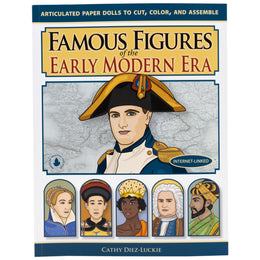






Disasters in History 8-Book Compilation
A fast-paced, gritty graphic novel that brings eight world-changing disasters to life—blending survival, heroism, and history in vivid comics that engage readers and reveal why these events truly mattered.
$14.95
Quantity:

In a Curriculum Kit

Nonconsumable

Nonreligious

Supplemental Material

2025 Third-Grade Curriculum Kit
Disasters in History
Disasters in History is not your average history book. It's fast-paced, gritty, and graphic—in the best way. This engaging graphic novel pulls kids into eight epic events that rocked the world and reshaped society. From the icy wreckage of Shackleton's Antarctic expedition to the fiery devastation of the Triangle Shirtwaist Factory Fire, these aren't just history lessons—they're stories of survival, failure, heroism, and change.Your child will trace the tension of the Apollo 13 mission, the tragedy of the Challenger explosion, and the sheer chaos of the Great Chicago Fire. He'll relive the horror of the Donner Party, witness the heartbreak of the Hindenburg disaster, and grapple with the consequences of the Attack on Pearl Harbor. Each event is told in striking comic-style panels that bring history to life in a way that even the most reluctant readers won't want to put down.
Yes, some stories are intense—after all, disasters are messy—but they're also meaningful. Some reveal humanity's darkest moments, while others highlight resilience and spark social reform. And while parents might want to keep some white-out on standby (especially for page 71), the overall impact is worth the read.
Still not sure about graphic novels? Here's why they matter.
Graphic novels draw kids in—especially those who squirm at the sight of a densely worded chapter book. The vivid art lures him in, and the elevated vocabulary keeps him learning without feeling like it's a chore. For struggling readers, they build confidence. For fluent readers, they offer a welcome breather from textbook-heavy learning.Whether your child is fascinated by fireballs or just needs a nudge toward enjoying history, Disasters in History delivers an unforgettable—and educational—reading experience. It's not just about what happened. It's about why it mattered.
Find answers to the most frequently asked questions about this product below:
Most children, from the reluctant, faltering reader to the brilliant but easily bored adolescent, will find graphic novels intriguing. A 2006 study found that the amount of reading children did for fun decreased from when they were eight through their teens. Graphic books can re-engage them in the delights of reading for leisure and learning. Here's an article we wrote with more considerations on Why Graphic Novels.







